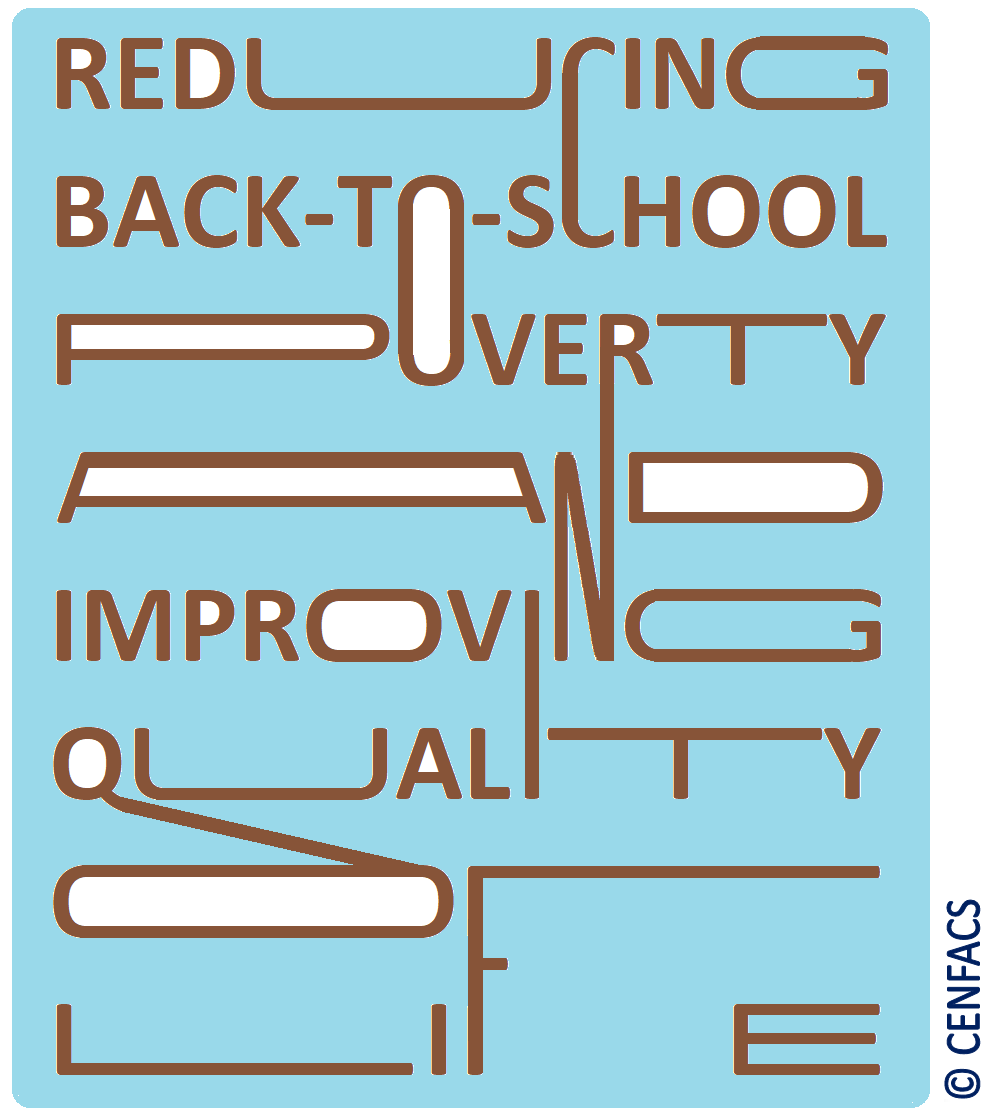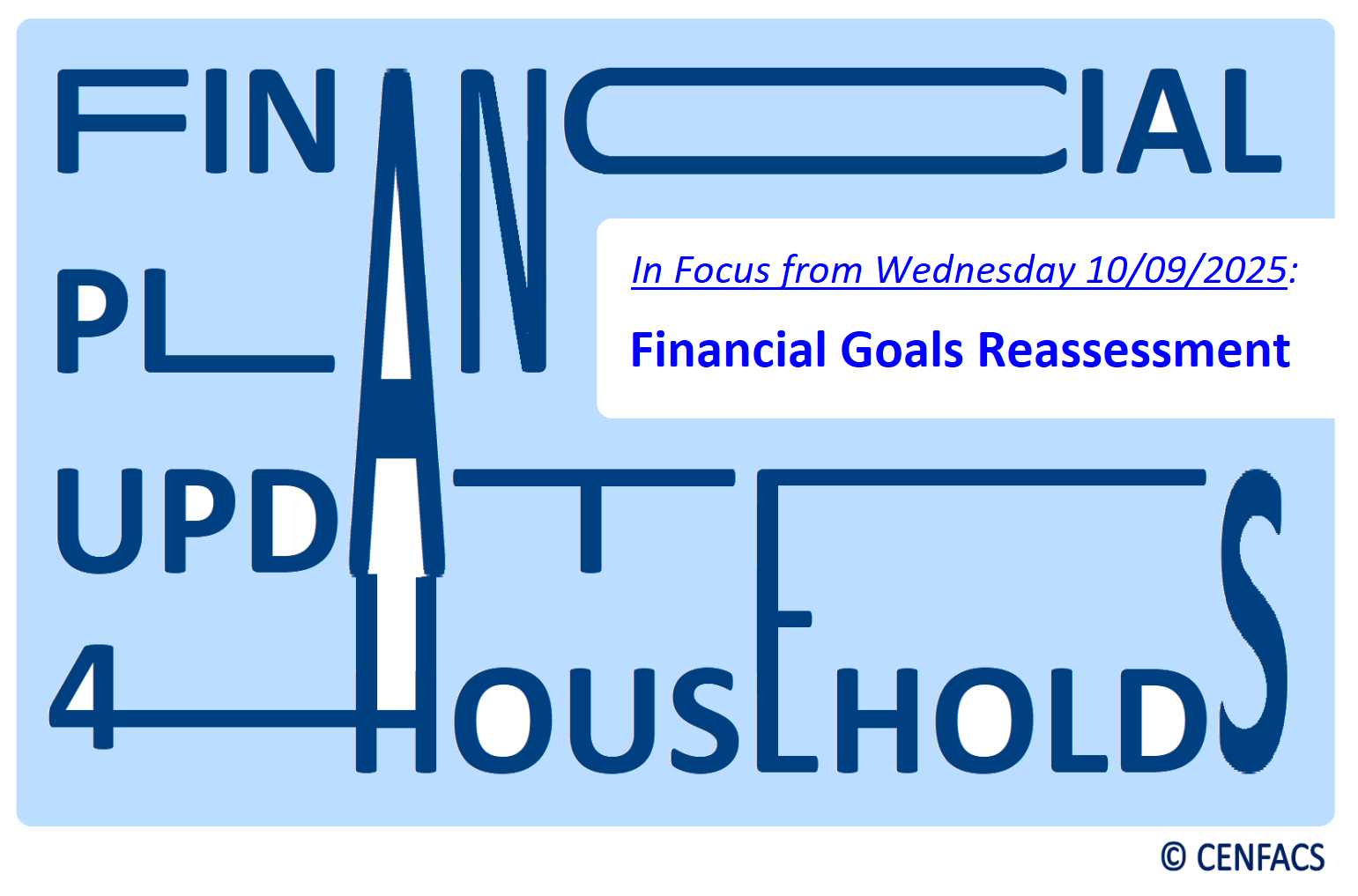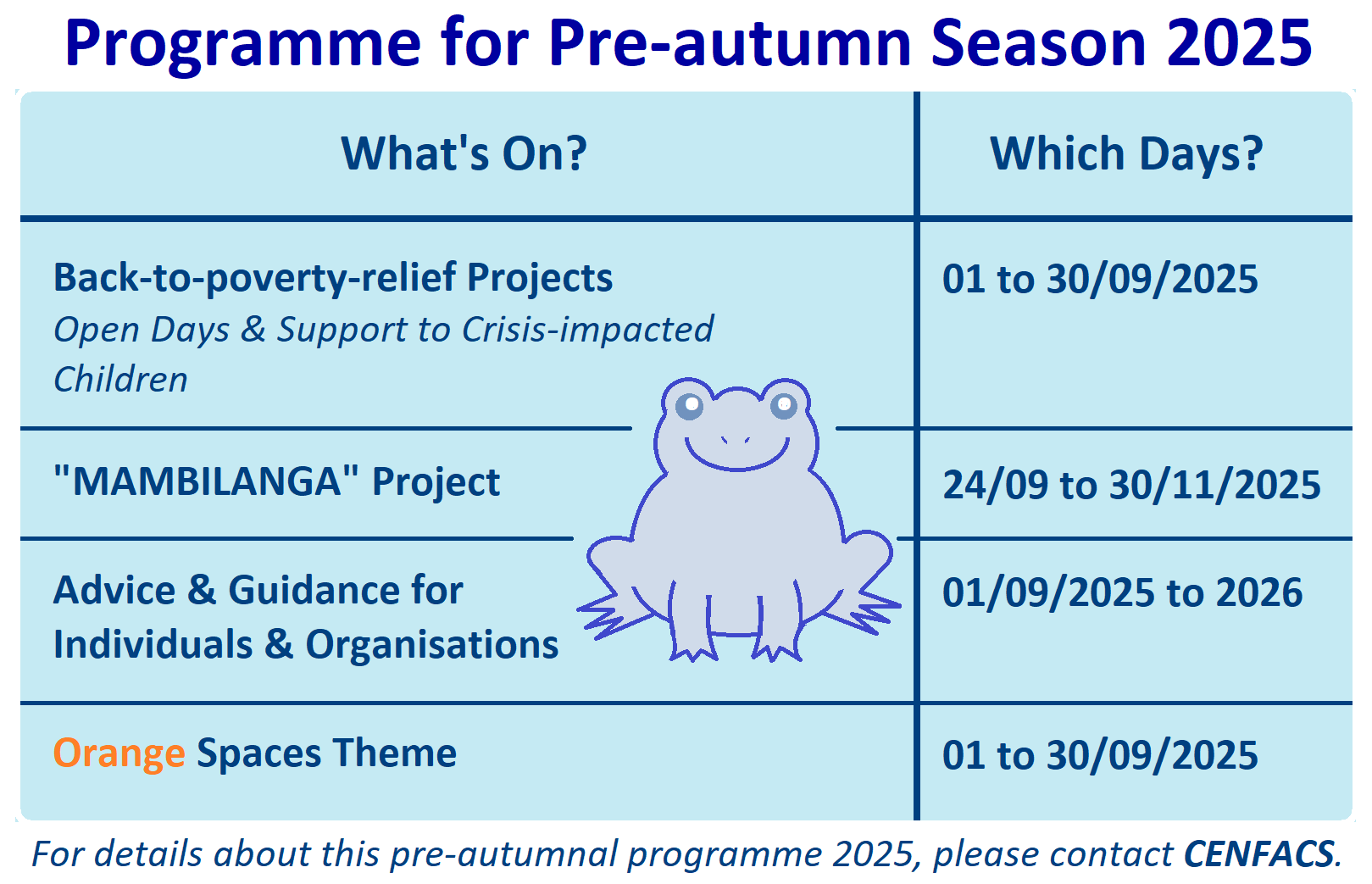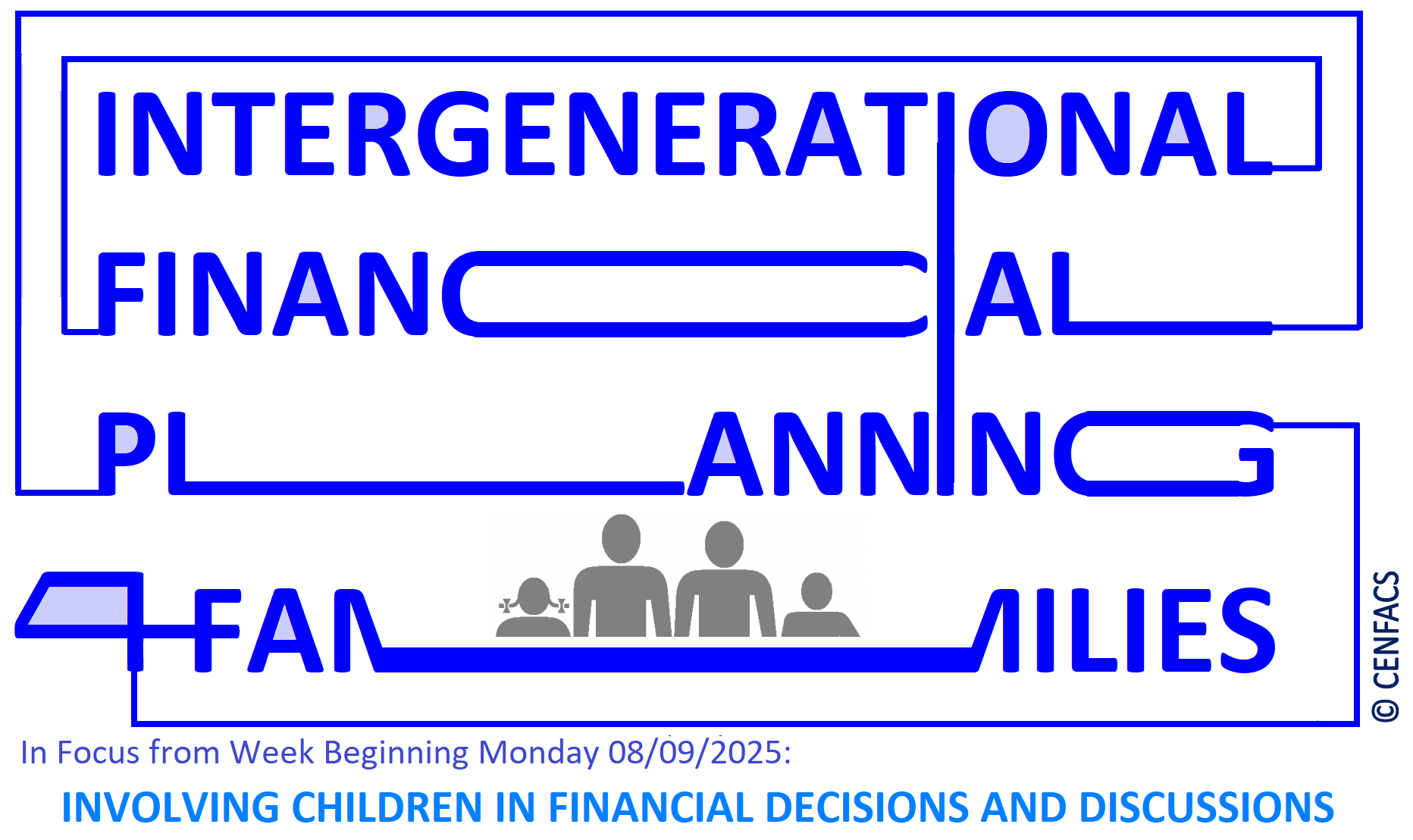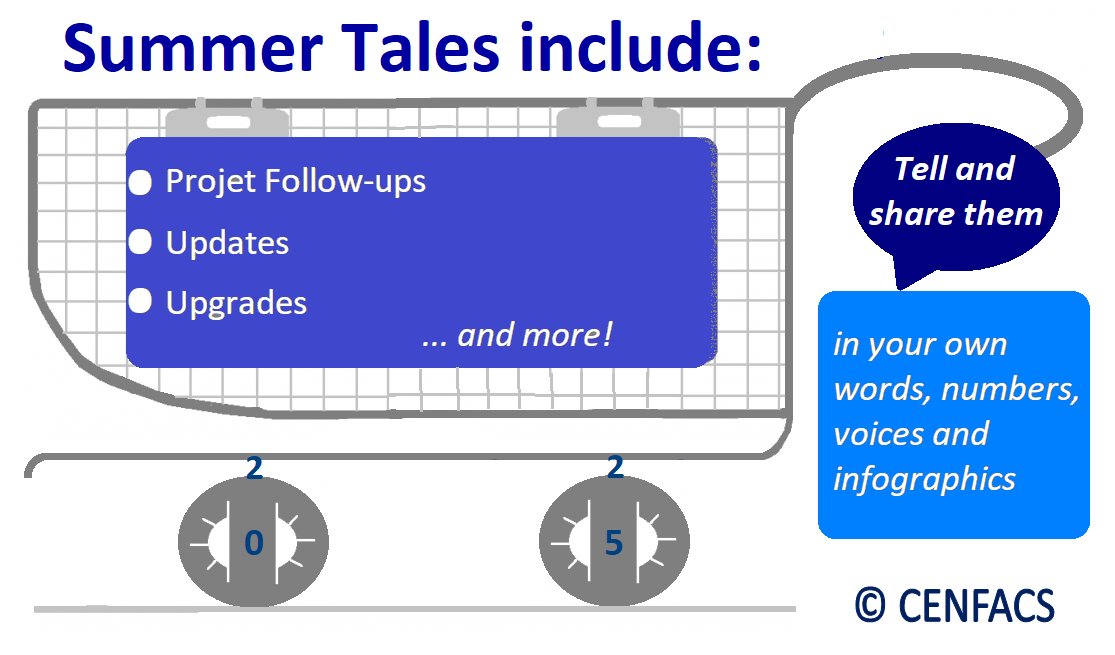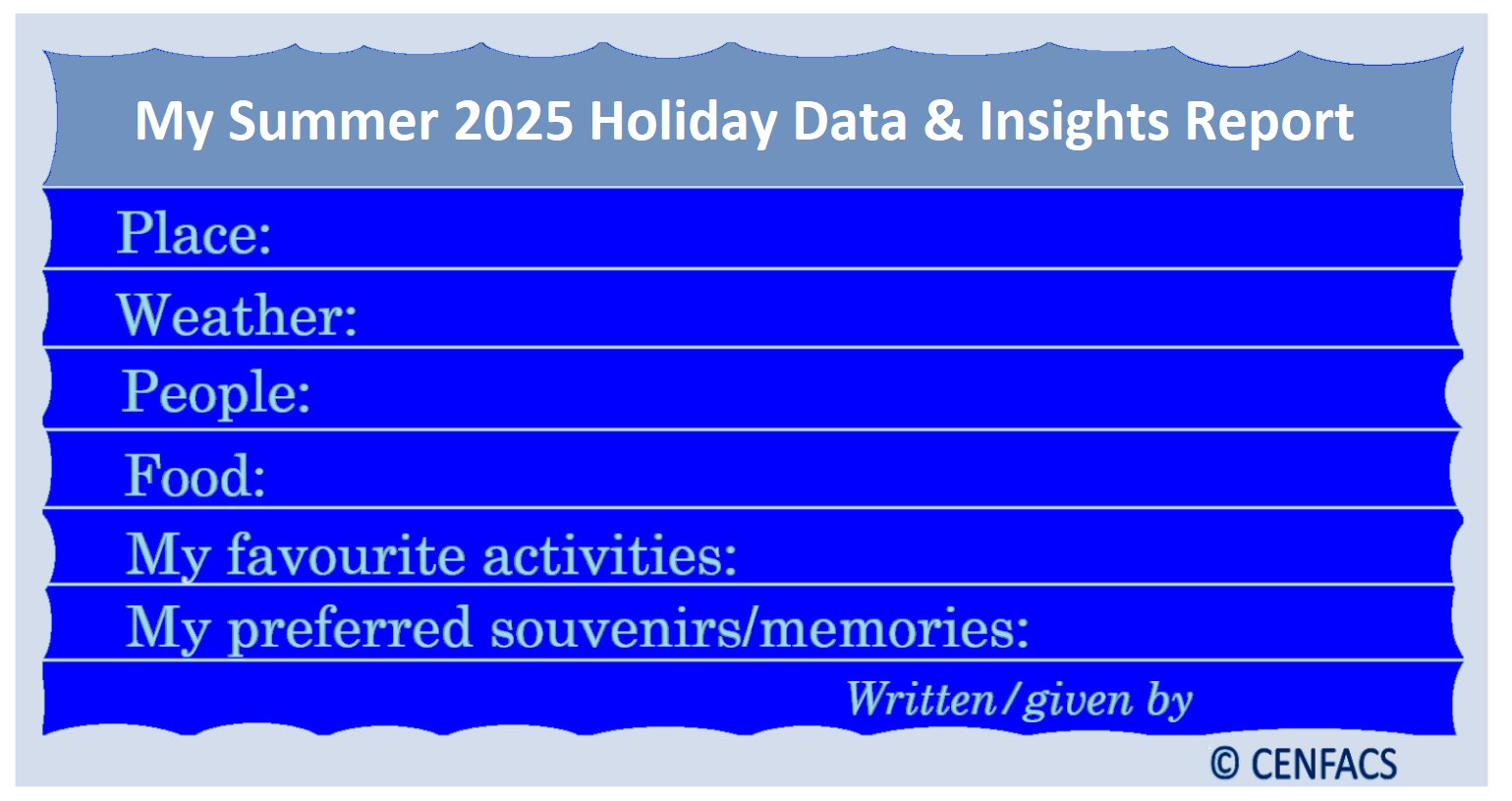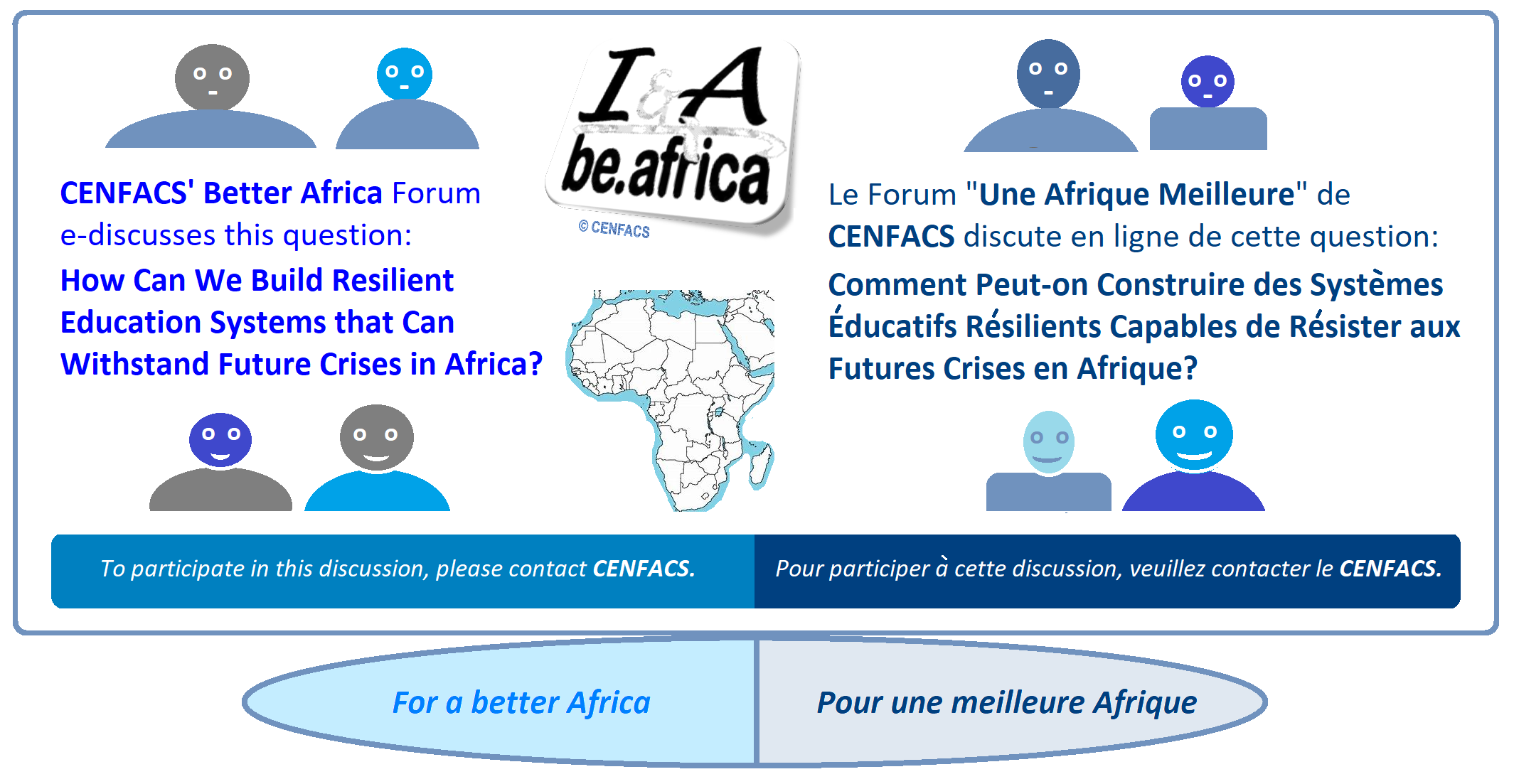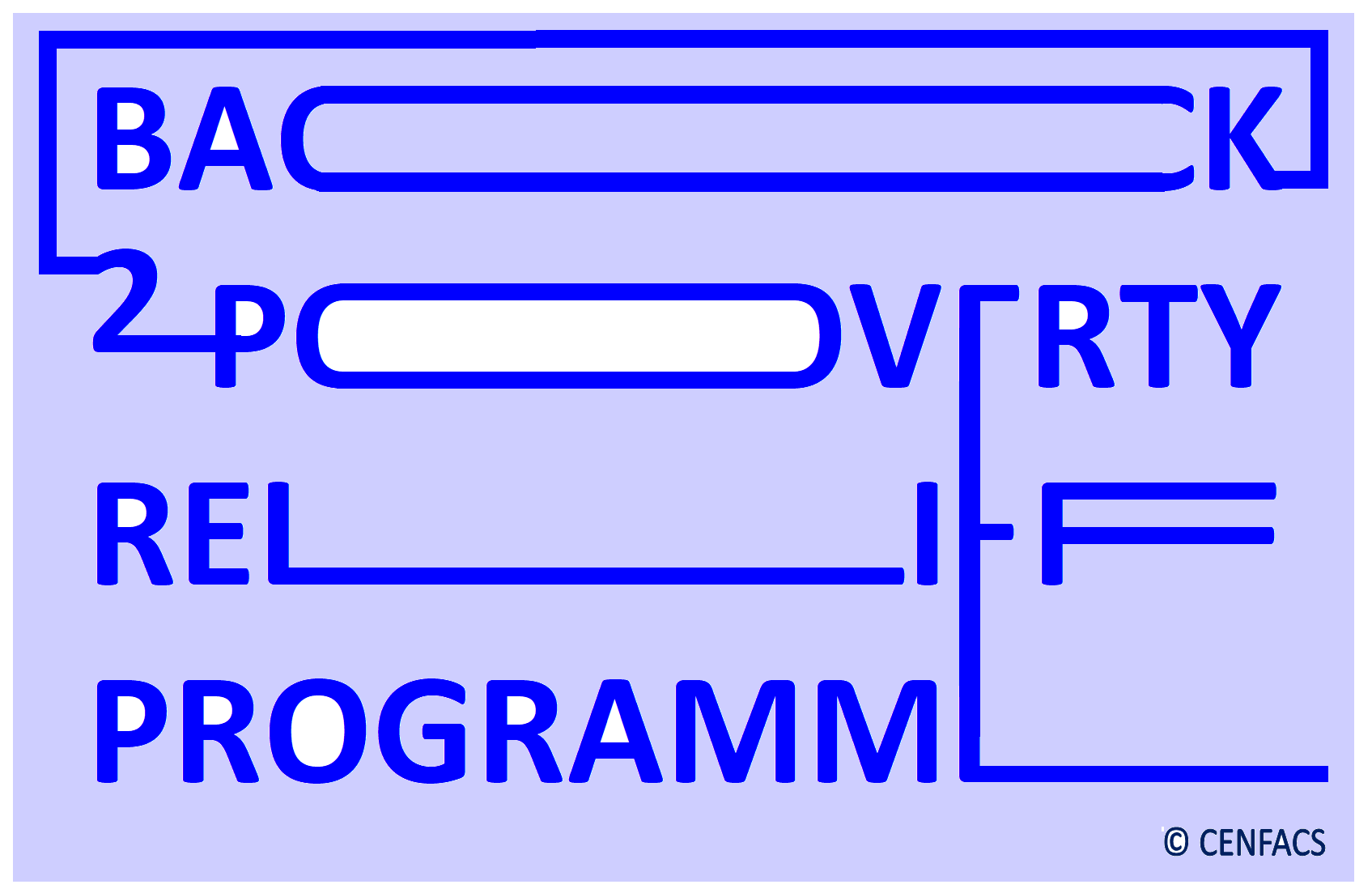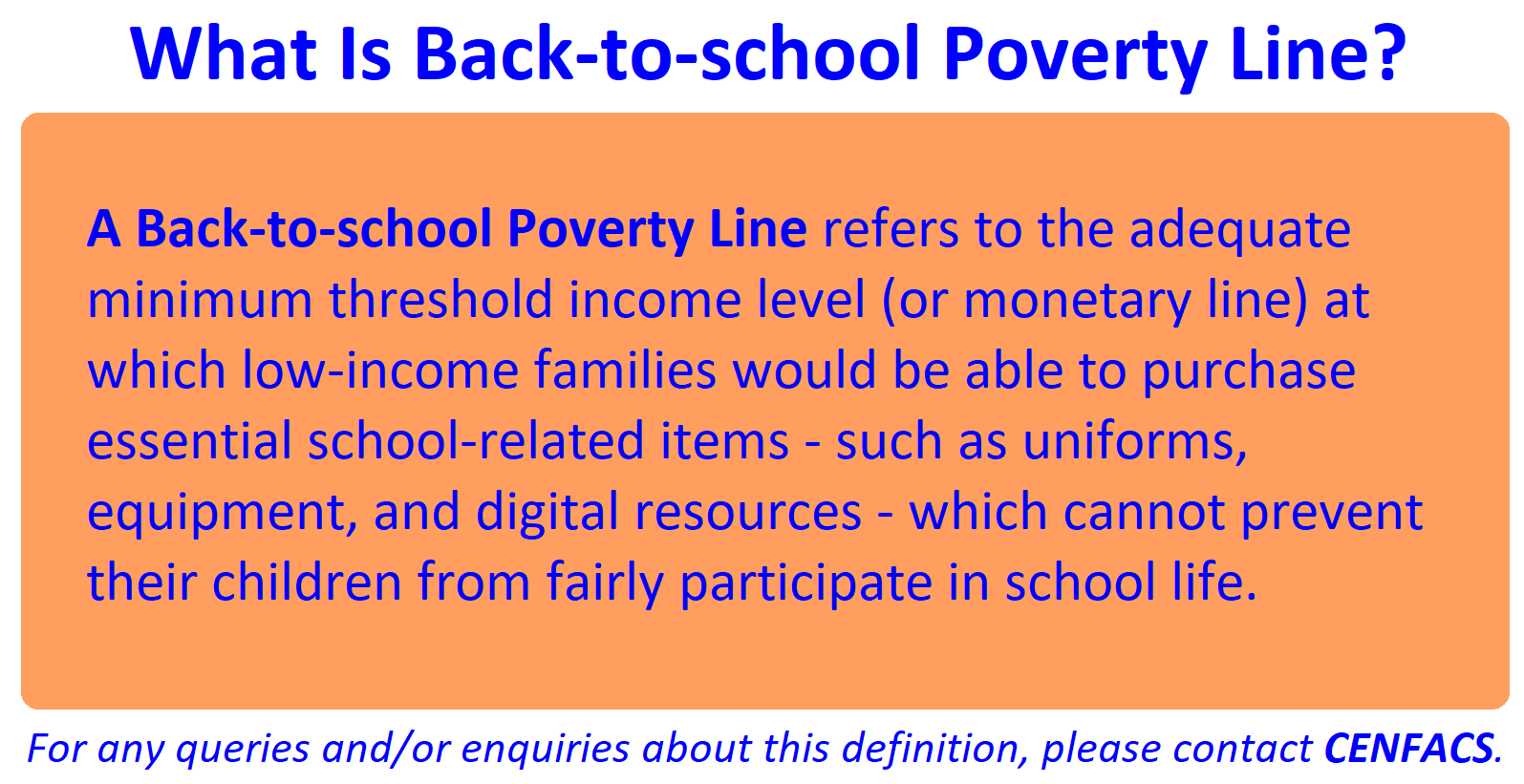Welcome to CENFACS’ Online Diary!
10 September 2025
Post No. 421
The Week’s Contents
• Reduction of Back-to-school Poverty to Improve the Quality of Life in 2025
• Coming in Autumn 2025: The 89th Issue of FACS which Will Be Titled as African Charities in Africa’s New Social and Solidarity Economy Ecosystem
• Financial Plan Updates for Households in 2025
… And much more!
Key Messages
• Reduction of Back-to-school Poverty to Improve the Quality of Life in 2025
Back to school is a challenging time for many families and parents, especially for those on low-income brackets or those living in poverty. It is even harder for many of them as they are trying to strike a delicate balance between building forward educational life for children and still dealing with the lingering effects of the polycrises, particularly of the cost-of-living crisis. It is deeply demanding for them during this painful time of the enduring cost-of-living crisis as the expenses of sending back their children to school are fiercely competing with high living costs. Amongst these challenges, the greatest one for these families is back-to-school poverty, which has to be reduced and ended.
• • Reduction of Back-to-school Poverty
Back-to-school poverty is what we are trying to help reduce or eradicate within our back-to-poverty-relief programme and campaign this Autumn 2025, if one wants to lay down the foundations for improving the quality of life. In our latest posts, we explained what we mean by back-to-school poverty. In this post, we shall go beyond the reduction of this type of poverty.
Indeed, to reduce back-to-school poverty, one needs to define back-to-school poverty line. What is back-to-poverty school poverty line?
• • Understanding Back-to-school Poverty Line
It is the adequate minimum threshold income level (or monetary line) at which low-income families would be able to purchase essential school-related items, such as uniforms, equipment, and digital resources, which cannot prevent their children from fairly participate in school life. Their incapacity to cross this line can be rooted from historically existing inequalities and income disparities.
The above-mentioned line depends on a number of factors such as the cost of living, the cost of back-to-school preparations, the support that is available for those low-income families, etc. The knowledge of these factors and causes of back-to-school poverty can help lay the ground for tackling it.
However, the reduction of back-to-school poverty should not be the end of road or an end itself. We need to go far in our way of working with the back-to-school poor so that they can improve the quality of their life. But, what do we mean by improving the quality of life for the back-to-school poor?
• • Meaning of Improving Quality of Life
To express improving quality of life, let us first explain the term ‘quality of life’. Our explanation of ‘quality of life’ comes from the World Health Organisation (WHO) quoted by Sarah Sperber on the website ‘berkeleywellbeing.com’ (1). The WHO’s explanation is
“The quality of life refers to an individual’s perception of their position in life in the context of the culture and value systems in which they live and in relation to their goals, expectations, standards and concerns”.
As one can notice that the concept of ‘quality of life’ is a subjective measure of one’s wellbeing. But, it can also be an objective measure. It all depends on whether one sees it as an subjective or objective measure. What is mostly interesting is that ‘quality of life’ comes with factors, namely basic factors (such as being well-nourished, free of disease and having income) and complex factors (like self-respect, dignity and community engagement). These factors are the ones that need to be improved or ameliorated to produce a good quality of life for the back-to-school children and their families. So, by working to reduce back-to-school poverty we are as well trying to help improve the quality of life.
• • Improving the Back-to-school Quality of Life
It is about contributing to a more positive back-to-school experience. There are strategies that can help improve the back-to-school quality of life for children facing challenges during the back-to-school period. Key strategies could include enhancing school attendance, supporting students or pupils at risk, addressing social issues, enhancing family support, reducing back-to-school poverty, etc.
However, there is no direct relationship between the reduction of back-to-school poverty and the improvement of the back-to-school quality of life, unless one shows it in the way they are tackling back-to-school poverty.
In CENFACS‘ case, we are trying to help reduce back-to-school poverty while assisting in the improvement of the quality of life of the same back-to-school poor. We are doing it through the implementation of back-to-poverty-relief programme and services.
For more on the Reduction of Back-to-school Poverty to Improve the Quality of Life in 2025, please read under the Main Development section of this post.
• Coming in Autumn 2025: The 89th Issue of FACS which Will Be Titled as African Charities in Africa’s New Social and Solidarity Economy Ecosystem
In the 88th Issue of FACS, it was about finding alternative funding sources so that African Charities could continue their mission of reducing poverty in Africa since foreign and international aid cuts forced them to look for alternatives, in particular to craft new funding and business models. We are still working on alternative developments that would enable African Charities to deliver their mission. We are approaching these alternative developments from the perspective of ‘sociology.institute’ (2) which explains that
“Alternative development models can be understood as a reaction to the limitations of traditional approaches. These alternative models prioritise human well-being, environmental sustainability, and the preservation of local cultures”.
In the 89th Issue of FACS, it will be about going beyond the limitations of traditional approaches by dealing with alternative economies or spaces that could be favourable to African Charities, particularly CENFACS‘ Africa-based Sister Organisations (ASOs), not only to keep on reducing poverty, but to possibly end it in Africa. The 89th Issue has interest in alternative economies. There are many alternative economies or spaces. The alternative economy or space that we are interested in is the Social and Solidarity Economy (SSE). What is SSE?
There are various definitions of SSE. Without listing all them, let us refer to the one given by the Organisation for Economic Cooperation and Development (3); definition which is:
“The SSE is an economic formation that aims to improve the quality of life of a region or community based on solidarity. It seeks to address and transform exploitation under capitalist economics and the large-corporation, large-shareholder-dominated economy”.
This type of economic formation also exists in Africa. In February 2025, African Union (4) through its Heads of State adopted the continent’s first 10-year Strategy on the Social and Solidarity Economy. Like any SSE, Africa’s SSE comprises social enterprises, cooperatives, mutuals and mission-driven organisations pursuing social, environmental and economic goals in tandem rather than as a trade-off. And African Charities are part of this new economy or space created in Africa; a space for societal action, social enterprise or social entrepreneurial and charitable activities.
The 89th Issue is about how African Charities can stand out of the crowd from the structural advantages of SSE models or ecosystems. Among these advantages are job creation, community-driven capital flows, systems alignment, collective ownership, democratic-making, and solidarity-based relationships within various organisations making the SSE. As Linda Lundgaard Andersen et al. (5) put it,
“Solidarity economy is a heterospace for economic activities and solidarity economic relations to people’s interactions when building the livelihood”.
For Africa’s SSE Ecosystem to functions as heterospace it requires that entities engaged in economic, social and environmental activities in it have interactions and exchanges between them while serving the collective and/or general interest.
The West Africa Civil Society Institute (6) states that
“The African Development Bank estimates that local giving could contribute up to US $400 billion to Africa’s Gross Domestic Product by 2030″.
Likewise, ‘africa.com’ (7) argues that
“Across Sub-Saharan Africa, social enterprises are estimated to directly create between 28 and 41 million jobs”.
Despite the lack of dedicated statistical frameworks hindering precise measurement, the above-mentioned estimated figures highlight the significant potential of domestic philanthropic and charitable efforts to fuel SSE as well as reduce poverty in Africa. African Charities play and can play a key role in the SSE by focusing on community well-being and social impact over profit, bridging service gaps by providing essential services like care, creating inclusive environments, and fostering democratic governance within the SSE ecosystem.
The 89th Issue refers to the key theoretical underpinnings of the SSE which rejects pure profit-maximisation to favour social impact and human values. It also refers to theories of equity, promotion, democracy and sustainability. Some of these theories that reject pure profit-maximisation have been highlighted by Linda Lundgaard Andersen et al. (op. cit.) who mention Karl Polanyi in these terms:
“The economy theory offered by Karl Polanyi claims that economic systems based upon the collaborative elements of reciprocity and redistribution historically precedes that of the utilitarian approach to the market”.
They also refer to the democratic theory developed by thinkers like Jurgen Habermas and John Dewey.
The 89th Issue will take into account SSE models or ecosystems which include cooperatives, mutuals, associations, non-profits, social enterprises and fair trade initiatives; while approaching ASOs in terms of the dynamism they can bring to SSE for a systemic transformation of the current economic system to system that favours poverty reduction.
Because SSE models or ecosystems provide an environment for alternative forms of capital, the 89th Issue will investigate how ASOs can benefit from alternative funding sources stemming from SSE space in Africa. It will also consider ASOs capital structure, deployment and measurement in Africa.
Since there is the primacy of people and social purpose over capital as one of they key values of SSE, the 89th Issue will be the experience of alignment of capital flows with impact into African Charities with social value creation and the needs of their users.
Africa’s shift to the social economy implies African Charities to participate in strategic move towards scalable, inclusive and future-ready systems. The 89th Issue will provide the feelings of African Charities about their experience in this move and how it will affect their project beneficiaries.
SSE ecosystems (SSEE) are also thought to be community-embedded economic models and areas underserved by formal systems. The 89th Issue will examine how the participation of ASOs in Africa’s SSEE will help meet the needs of those living in informal economy.
Far from being an exposé on Africa’s new experience about SSE, the 89th Issue will explore ASOs’ attempt to build independence from perpetual grants system in order to improve their participation in SSEE in Africa while delivering their mission in a space that is inclusive, scalable and future-oriented.
To uncover more information about the Issue No. 89 or to reserve a copy before its publication, please contact CENFACS.
• Financial Plan Updates for Households in 2025
Our efforts to work with households making the CENFACS Community so that they can be empowered with financial skills continues with the 2025 series of Financial Plan Updates. Last year, in the 2024 series of these updates we dealt with the following topics: Household Financial Plan, Household Investment Planning, Estate Planning, and Retirement Planning.
While we are still available to discuss the topics relating to 2024 series with those who have some enquiries or queries about them, we are now moving to the 2025 series of these updates which are Financial Plan Updates for Households in 2025.
• • Financial Plan Updates for Households in 2025
The current series follow the same aim of building a more secure financial future for these households through financial skills and knowledge so that they can navigate their financial futures more comfortably and affectively. In this respect, we are carrying on addressing the financial advice gaps and ensuring that households making the CENFACS Community receive appropriate financial guidance they need to secure their financial futures.
To start this 2025 series of Financial Plan Updates for Households, let us redefine financial plan updates, explain what these updates are about, highlight CENFACS Bridging Financial Information Gap project, and provide the action plan for this 2025 series together with the first update.
• • Redefining Financial Plan Updates
A financial update is, according to ‘financestrategists.com’ (8),
“A regular review of your financial strategies to keep them on track and adjust them as needed to achieve your objectives. The primary objectives of updating a financial plan are to adapt to changes in personal circumstances, respond to economic and market changes, and reassess financial goals and strategies”.
This definition will be used for this 2025 series and customised in the context of households.
• • About Financial Updates
The updates are about ensuring that households making the CENFACS Community have tools and resources necessary to better manage their finances. They reflect a broader effort to enhance household financial stability, support and well-being.
These updates are part and fall under the scope of CENFACS Bridging Financial Information Gap Project.
• • Highlights about CENFACS Bridging Financial Information Gap (BFIG) Project
It is one of CENFACS advocacy projects which consists of Bridging the Financial Gap with project beneficiaries through
√ Financial awareness and protection
√ Customised information on economic situation
√ Confidence building, psychological support & moral boost
√ Individual financial impact assessment
√ Signposting to financial information, counselling, emotion-control and trauma management services
√ Regular updates about the economic situation (downturn or boom) and in terms of financial skills and knowledge to enable our community members to better manage their finances
√ Money management and saving tips and hints
√ Basic advice on financial recovery leads and plans under BFIG project.
The current Financial Plan Updates are part and parcel of this BFIG project. To proceed with these updates, an action plan is required.
• • An Action Plan for Financial Plan Updates 2025 Series
Perhaps, the start point here is to briefly explain action plan.
The website ‘vennage.com’ (9) states that
“An action plan is a meticulously structured strategy that pinpoints specific steps, tasks and resources vital to turning a goal into reality… It is the strategic map that outlines every step, decision and pitstop needed to reach your ultimate decision”.
Regarding Financial Plan Updates, our action plan indicates the following themes that will be covered from every Wednesday starting from 10/09/2025:
∝ 10/09/2025: Financial Goals Reassessment
∝ 17/09/2025: Alignment of Financial Plan with Household Circumstances
∝ 24/09/2025: Keeping Household Financial Strategies on Track
∝ 01/10/2025: Adjusting Household Financial Strategies
∝ 08/10/2025: Households’ Financial Response to Economic and Market Changes
The work with participants will consist of reviewing the above-planned areas of their financial plan and adjust them in the light of new information or data, and in line with the current development landscape and near future economic realities.
Those who may be interested in can contact CENFACS for further details. If you need support with your financial plan updates, please do not hesitate to communicate with CENFACS.
• • First Update: Financial Goals Reassessment (From Wednesday 10/09/2025)
To reassess financial goals, it is better to understand these goals.
• • • What are financial goals?
There are many ways of approaching financial goals. One of these approaches is given by ‘wallstreetmojo.com’ (10) which argues that
“Financial goals are targets set by an individual to achieve financial milestones or plans. In other words, they are financial objectives that an individual wishes to accomplish with a certain time frame”.
In simple terms, financial goals are what households hope to achieve with their money. Households can reassess what they hope to achieve with their money.
These goals should be SMART (that is, Specific, Measurable, Attainable, Realistic and Time-bound).
Examples of financial goals can include buying home, starting a business, building an emergency fund, etc.
These goals can be reassessed. As ‘eaglefinances.com’ (11) puts it,
“Setting goals is not a one-time task. Just as life evolves, so should our financial objectives. Reassessing finances periodically is not merely advisable, but crucial for sustainable growth and security”.
• • • Financial goals reassessment
To reassess their financial goals, households may be required to use tools and strategies for effective goals reassessment. Among the tools or strategies, it is worth mentioning financial inventory, regular review sessions, household finance software or apps. When reassessing your financial goals, it could be better to avoid mistakes or errors. The way of avoiding them is to seek advice to a financial advisor.
However, not every household can afford to hire a financial advisor. Because of that, under the BFIG project, we can work with applicants to find appropriate financial services to meet their needs if their requests are beyond what we provide.
Finally, it could also be wise to track progress during post-reassessment period. This will help to know if the reassessment has improved household financial goals.
Those who may be interested in reassessing their financial goals can contact CENFACS for further details.
If you need support with your Financial Plan Updates, please do not hesitate to communicate with CENFACS.
Extra Messages
• Orange Spaces-focused Note from Wednesday 10/09/2025: The Relationship between Orange Space and Spatial Poverty
• Intergenerational Financial Planning for Families – In Focus from Week Beginning Monday 08/09/2025: Involving Children in Financial Decisions and Discussions
• Summer 2025 Reporting in Your Own Words, Numbers, Voices and Information Graphics
• Orange Spaces-focused Note from Wednesday 10/09/2025: The Relationship between Orange Space and Spatial Poverty
Orange Space does not have as such a recognized definition in the context of spatial poverty. But, it can refer to specific visual representation of poverty in mapping or to deprived areas when using colour-based mapping for poverty analysis. The link between such spatial representations and poverty makes spatial inequalities and the specific challenges of these areas more evident and actionable for intervention.
We are going to approach this link through the following points: orange space as a visual concept, the possible link between orange space and spatial poverty, and a weekend homework for kids. Let us summarise each of these points.
• • Orange Space as a Visual Concept
Orange Space is not a theoretical concept but a visual one. It is used in a spatial analysis to identify and differentiate a specific group (e.g., transport-poor households in a Dutch study on transport poverty) or characteristic within a larger dataset. Orange can also be a designated colour to denote certain types of deprivation or deprivation mapping that uses colour-coded areas to represent continuous, multidimensional spatial concepts of deprivation, studies suggest.
• • The Possible Link between Orange Space and Spatial Poverty
This link can be explained to visualise disadvantage, to identify vulnerable populations, and to support targeted interventions.
a) Visualizing disadvantage
When used in a spatial poverty context, Orange Space serves to visualise spatial disparities making the physical locations and characteristics of poverty more tangible.
b) Identifying vulnerable populations
By highlighting these areas, urban planners and policymakers can identify specific vulnerable populations, such as those lacking adequate access to public transport or green space, and can design targeted interventions to address these specific needs. Charities working on vulnerable populations can also set up projects and activities to meet the same needs.
c) Supporting targeted interventions
Orange Spaces allow for a more nuanced understanding of the spatial patterns of deprivations. This can lead to a more effective urban planning and intervention strategies aimed at reducing poverty and enhancing sustainable development through accessibility.
• • Working with the Community on the Relationship between Orange Space and Spatial Poverty via a Weekend Homework for Kids
There are many ways of working with the community to highlight the Relationship between Orange Space and Spatial Poverty. Amongst these ways is to have an activity. In this case, the activity is a short weekend homework, particularly for those who have kids, to use colour-based map to analyse poverty. Put it simply, kids can look at maps of their choice and check which colour (like orange ) depicts poverty, disadvantage and vulnerable people.
For those who have any queries or concerns about this weekend homework for kids, they are free to let CENFACS know.
For those of our members who would like to work with us on the Relationship between Orange Space and Spatial Poverty, they are welcome to work with us.
For those members who would like to share their experience in terms of the Relationship between Orange Space and Spatial Poverty; they are also invited to share it with us.
For those who would like to further discuss with us any other matters or insights relating to the the Orange Spaces Theme, they should not hesitate to contact CENFACS.
• Intergenerational Financial Planning for Families – In Focus from Week Beginning Monday 08/09/2025: Involving Children in Financial Decisions and Discussions
Decisions and discussions about financial money can be shared with children depending on their ages and financial subjects. Involving them in these decisions and discussions help them understand the value of money and the importance of making responsible choices. There are ways or models of involving them.
• • Ways of Involving Children
Children can be involved in age-appropriate money decisions and discussions by
σ Incorporating money management lessons into their everyday lives
σ Using interactive money management games and activities
σ Sharing with them online financial simulation and board games
σ Gamifying money management
σ Assigning age-appropriate financial responsibilities
σ Holding family finance meetings
σ Avoiding impulse spending
σ Holding age-appropriate money discussions
Etc.
Involving children in these decision-making processes and discussions will enable them to develop valuable financial skills for their future. However, each family is particular in their kind. They can find their own way and pace to involve their children into decisions and discussions about money. There are resources to support this involvement.
• • Resources to Support Children’s Financial Involvement
There are both online and paper resources to support on ways of involving children in financial decisions and discussions. There are interactive tools such budgeting apps, kid-friendly financial games, etc. to back this process.
Some of our members can navigate alone to understand these tools. Others may find them difficult. For those who need support in terms of Resources to Support Children’s Involvement in Financial Decisions and Discussions, they can contact CENFACS for guidance and support.
• • Working with CENFACS Community Members on Involving Children in Financial Decisions and Discussions via a Weekend Homework for Families
As a way of supporting this week topic relating to Intergenerational Financial Planning for Families, we are asking to those who can to conduct this weekend homework activity:
Hold a Family Finance Meeting.
Those who may have some questions about this activity, they should not hesitate to contact CENFACS.
Those who would like to know more about Involving Children in Financial Decisions and Discussions and to work with CENFACS, they can contact us.
Similarly, those who may be interested in Intergenerational Financial Planning or in discussing their Ways of Involving Children in Financial Decisions and Discussions, they should feel free to contact CENFACS. Equally, those who would like to tackle intergenerational poverty can communicate with CENFACS.
• Summer 2025 Reporting in Your Own Words, Numbers, Voices and Information Graphics
Last week, we started to unlock or unpack our Summer holiday data and to prepare to tell our Summer holiday stories. This week, we are going further in putting into practice our unlocked or unpacked data in support of Summer experiences or stories.
• • Summer 2025 Experiences Reporting as an Additional Opportunity
From this week until Wednesday the 24th of September 2025, we are simply asking to those who can, to share with us and others their Summer experiences; experiences about what they did during the Summer break and think that it is useful for sharing.
The 2025 Summer Experiences Reporting activity is a further opportunity for reporting, sharing, learning and development for those who have not yet informed us about the outcomes of projects; projects pending for reporting, personal experiences to be shared, lessons to learn and development trends to spot.
• • Sharing Development Experiences, Stories, Tales and Reports about Summer 2025
As we are nearing the end of Summer 2025, we would like our users. members and supporters as well as those who sympathise with CENFACS’ beautiful and noble cause to share with us and others their experiences, stories and reports about the initiatives mentioned below.
a) Run, Play and Vote projects (Triple Value Initiatives 2025)
You can feedback the outcomes or Action-Results of your Run, Play and Vote projects.
b) Volunteering and Creation Stories
You can also share your volunteering stories with us and others if you did volunteer during the Summer break.
c) Summer Programmes: Happiness, Healthiness and Wellness Projects as well as Appeal Projects
You may prefer to report on your use of Happiness, Healthiness and Wellness projects and your response to our Humanitarian Relief Appeal projects.
d) August 2025 Trend Analysis Activities
You can as well report on your experience of Trend Analysis 2025 Activities (that is, Trend Analysis for CENFACS as a Charity, User Activity Trend Analysis, and Trend Analysis of the Poverty Reduction Market by following the Direction of Poverty Reduction).
e) Restoration Year’s Activities/Tasks
As we are in CENFACS’ Restoration Year, we would be more than happier to hear from you any uplifting stories related to this year’s dedication.
f) Journal of Happiness, Healthiness and Wellness
You can share the contents of your journal of happiness, healthiness and wellness relating to happy, healthy, good and trustful Summer 2025; as well as help build a better Summer holiday experience.
g) Other Experiences and Memorable Stories Reporting
You can feedback on any moving experience or restoration story you have had during Summer 2025.
You can report your experience via e-mail, over phone and through social media networks or channels of communication (e.g., Twitter).
Thank you for supporting us with your Summer 2025 experience, story and report in Your Own Words, Numbers, Voices and Information Graphics.
Message in English-French (Message en Anglais-Français)
• CENFACS’ be.Africa Forum E-discusses the following question:
How Can We Build Resilient Education Systems that Can Withstand Future Crises in Africa?
At the moment, in a number of places in Africa, there are children who have not been able to go back to school because of various causes or factors such as conflicts, displacement, natural disasters, economic hardship, and lack of resources. Calculating the out-of-school rate, the UNESCO Institution for Statistics and Global Education Monitoring Report (12) indicates that in 2025 there are an estimated 118 million out-of-school children in Africa, with this number having risen since 2015. According to the same report, factors contributing to this level of out-of-school children population in Africa include conflicts and crises, fragility, data gaps in conflict zones, funding cuts, gender inequality, rapid population, and poor educational quality.
The above-mentioned figure suggests that education systems in Africa tend to be lacking resilience. But, what is a resilient education system?
A resilient education system is the one refers to as it has the capacity to prevent, prepare for, withstand, and recover from shocks and stresses while maintaining its core functions and supporting societal development. Yet, African education systems cannot withstand future crises, that is they have not proactive preparation through risk assessment, educational continuity planning, and developed a crisis management framework.
In those circumstances, how can Africa build resilient education systems that will withstand future crises?
The above-mentioned question is the one we are discussing this week within CENFACS be.Africa Forum. Our discussion is revolving around the following points:
σ Continuity in strengthening the education system
σ Anticipation of risks through risk analysis
σ Planning for disruptions
σ Responding to crises effectively
σ Implementing recovery measures to prevent future vulnerabilities.
Those who may be interested in this discussion can join our poverty reduction pundits and/or contribute by contacting CENFACS be.Africa Forum, which is a forum for discussion on poverty reduction and sustainable development issues in Africa and which acts on behalf of its members by making proposals or ideas for actions for a better Africa.
To contact CENFACS about this discussion, please use our usual contact address on this website.
• Le Forum ‘Une Afrique Meilleure’ de CENFACS discute en ligne de la question suivante:
Comment Peut-on Construire des Systèmes Éducatifs Résilients Capables de Résister aux Futures Crises en Afrique?
En ce moment, dans plusieurs endroits en Afrique, il y a des enfants qui n’ont pas pu retourner à l’école en raison de diverses causes ou facteurs tels que les conflits, le déplacement, les catastrophes naturelles, la difficulté économique et le manque de ressources. En calculant le taux d’enfants non scolarisés, l’Institut de Statistique de l’UNESCO et le Rapport Mondial de Suivi sur l’Éducation (12) indiquent qu’en 2025, on estime à 118 millions le nombre d’enfants non scolarisés en Afrique, ce chiffre ayant augmenté depuis 2015. Selon le même rapport, les facteurs contribuant à ce niveau de population d’enfants non scolarisés en Afrique comprennent les conflits et les crises, la fragilité, les lacunes de données dans les zones de conflit, les coupes budgétaires, les inégalités de genre, la croissance rapide de la population et la mauvaise qualité de l’éducation.
Le chiffre mentionné ci-dessus suggère que les systèmes éducatifs en Afrique ont tendance à manquer de résilience. Mais, qu’est-ce qu’un système éducatif résilient ?
Un système éducatif résilient est celui qui a la capacité de prévenir, de se préparer, de résister et de se remettre des chocs et des stress tout en maintenant ses fonctions essentielles et en soutenant le développement sociétal. Poutant, les systèmes éducatifs africains ne peuvent pas résister aux crises futures, c’est-à-dire qu’ils n’ont pas de préparation proactive par le biais d’une évaluation des risques, d’une planification de la continuité éducative et du développement d’un cadre de gestion de crise.
Dans ces circonstances, comment l’Afrique peut-elle construire des systèmes éducatifs résilients qui tiendront face aux crises futures ?
La question mentionnée ci-dessus est celle que nous discutons cette semaine au sein du Forum ‘Une Afrique Meilleure’ de CENFACS. Notre discussion tourne autour des points suivants :
σ Continuité dans le renforcement du système éducatif
σ Anticipation des risques à travers l’analyse des risques
σ Planification des perturbations
σ Réponse efficace aux crises
σ Mise en œuvre de mesures de récupération pour prévenir les vulnérabilités futures.
Ceux ou celles qui pourraient être intéressé(e)s par cette discussion peuvent se joindre à nos experts en réduction de la pauvreté et/ou contribuer en contactant le ‘me.Afrique’ du CENFACS (ou le Forum ‘Une Afrique Meilleure’ de CENFACS), qui est un forum de discussion sur les questions de réduction de la pauvreté et de développement durable en Afrique et qui agit au nom de ses membres en faisant des propositions ou des idées d’actions pour une Afrique meilleure.
Pour contacter le CENFACS au sujet de cette discussion, veuillez utiliser nos coordonnées habituelles sur ce site Web.
Main Development
• Reduction of Back-to-school Poverty to Improve the Quality of Life in 2025
In order to approach back-to-school poverty and the improvement in the quality of life, the following items will be considered:
∝ Back-to-school Challenge
∝ Back-to-school Disrupted by the Enduring Cost-of-living Crisis
∝ Back-to-school Poverty Line
∝ Back-to-school Support at CENFACS with Back-to-school Poverty Reduction Clinics
∝ Strategies for Reducing Back-to-school Poverty
∝ Back-to-school Budget Adjusted for Inflation
∝ Extra Investment Linked to Back-to-school Preparation and Children’s Education
∝ Back to School is NOT a One-day Event
∝ Go Net Zero in Your Approach to Back to school
∝ Improving Quality of Life.
Let us summarise each of these elements explaining our way of approaching back-to-school poverty reduction.
• • Back-to-school Time as a Challenging Period for a Basic Human Right and a Deserving Cause
For some, back to school/college is a normal time to prepare and do normal purchase whether it is for school uniforms or books or even any other school items. However, for those who are struggling to make ends meet, back-to-school time could be a very challenging moment as they may not always have enough financial resources or support to cope with the requirements of the start of the new school year. Yet, education is a basic human right and a deserving need for children and all society.
Back to school/college for the poor is characterised by the following:
∝ The struggle to afford the educational costs linked to school/college
∝ The inability to meet basic life-sustaining needs (including of education, food, fuel, shelter, skills development, clothes, bedding, etc.)
∝ Deprivation of cleaning and disinfecting household items
∝ The financial inability for children to access after school clubs
∝ The lack of resources to deal with hygiene poverty
∝ The lack of or poor access to internet broadband
Etc.
This year’s back to school/college is still painful as the cost-of-living crisis is posing disruptions to many low-income or poor families and households. Already, many of them have been struggling to come out of the legacies of the recent crises. Now, this struggle has increased with the enduring cost-of-living crisis, which still is complicating and disrupting the back-to-school organisation as well as the start of academic year for most of these families and households.
• • Back to School Disrupted by the Enduring Cost-of-living Crisis
The rise in the prices of food, energy, water, rent and other basic necessities of life can only bring a lot of pain for those who are already struggling to make ends meet. Back-to-school preparation and delivery are not exempted from this pain.
Back to school has been disrupted in many aspects and respects because educational life is linked to the satisfaction of other life-sustaining needs. This is because without food, energy, water, home, hygiene, transport and health; all operation of back to school and even afterwards can be jeopardised.
If there is any help to cover some of the costs of back to school, it would be great if this help could make up the difference linked to the cost-of-living crisis. Otherwise, the needs relating to back to school would not be met. Failing to meet those needs could even be worse where there is a situation of back-to-school poverty.
• • Back-to-school Poverty Line
As we defined it in our last post (13), Back-to-school poverty is the inability to afford the educational requirements of the start of the new school year. But how do we measure it?
• • • A suite of indicators for measuring back-to-school poverty
The following cases can indicate that there could be a situation of back-to-school poverty and hardships:
∝ Back-to-school income < back-to-school expenses (If parents or carers of children going back to school do not have enough money or support to cover the expenses linked to back to school)
∝ 40 to 50% Household income ≈ Back-to-school expenses (If households spend more than a certain percentage like 40 to 50 percent of their incomes in back-to-school preparation and delivery compared to other items in their budget)
∝ Debt/Back-to-school expenses ratio (If households borrow money to cover expenses relating to back-to-school preparation and delivery)
∝ Back-to-school expenses ≥ Living expenses (If back-to-school expenses fiercely competing against other living expenses in household budgets).
Not having enough money, spending more in back-to-school expenses compared to other household expenses and borrowing money to prepare back to school for children are all signs or indicators of back-to-school poverty and hardships. When this type of poverty or hardship is intense and deep, it is even a serious problem.
There are more indicators than the above mentioned. The other indicators for measuring back-to-school poverty (which are mostly used at macro- and meso-economic levels) are as follows:
∝ Workless households: Measures the percentage of households where parents are not in work, which can indicate poverty levels;
∝ Educational attainment: Statistical indicators that show the percentage of children in poverty who achieve certain educational milestones;
∝ Learning poverty: Indicators that highlight the gap between the learning outcomes of children from low-income families and those from higher-income families;
∝ Poverty-related attainment gap: Data on the differences in educational outcomes between children from low-income and high-income backgrounds.
These indicators (like household expenditure on back-to-school preparations), if they are not good, can express the inability for parents and carers to meet the basic life-sustaining needs of education for their children in terms of purchasing school items (such as uniforms, clothes, books, electronics, etc.) and providing the basic infrastructures and necessities (whether it is at home or outside) to support the education and learning of their children.
This incapacity can include other expenses that compete against or with educational materials; expenses that are school fees, living expenses to start a new school year, transport cost to travel to schools, food, a place to study at home, family relocation, adequate meal to study, a proper bed to sleep well, basic healthcare and hygiene at home, etc.
Besides these indicators, there are metrics.
• • • Metrics related to back-to-school poverty
These metrics are quantifiable measurements enabling to assess performance, track progress, and measure success of a process or initiative to deal with back-to-school poverty. Amongst these metrics, we can mention the two below:
σ Ethnic disparities: Tracks the relationship between child poverty and educational outcomes varies by ethnicity, suggesting that different groups may experience different challenges in accessing education;
σ School-level FRPL (Free and Reduced-Price Lunch) rates: Measures the percentage of students or pupils from low-income families who are enrolled in free and reduced-price lunch programmes, which can indicate poverty levels.
These two metrics and others (which we have not mentioned here) provide a certain idea of the educational and economic challenges faced by children during back-to-school period.
• • • Back-to-school poverty line
Although there is no specific back-to-school poverty line, it is possible to determine and define it. A back-to-school poverty line refers to the adequate minimum threshold income level (or the monetary line) at which low-income families would be able to purchase essential school-related items, such as uniforms, equipment, and digital resources, which cannot prevent their children from fairly participate in school life. Their incapacity to cross this line can be rooted from historically existing inequalities and income disparities.
The above-mentioned line depends on a number of factors such as the cost of living, the cost of back-to-school preparations, the support that is available for those low-income families, etc. The knowledge of these factors and causes of back-to-school poverty can help lay the ground for tackling it.
• • • Back to school for families and parents living in poverty
Families and parents living in poverty or on a tight family budget may not be able to afford these additional expenses budget. They may be forced to currently deal with two types of poverty: back-to-school poverty and hygiene poverty.
The first type of poverty is related to the start of the new school year whereas the second is caused by the lack of hygiene.
Since we have already considered back-to-school poverty, we are going to only explain hygiene poverty.
• • • • Explaining hygiene poverty
To elucidate hygiene poverty, we are referring to what ‘povertyimpactnetwork.com’ (14) argues about that which is:
“Hygiene poverty is an inability to afford everyday hygiene products, such as shampoo, toilet paper, grooming products, dish soap, etc.”
On the website ‘povertyimpactnetwork.com’, it is further stated that
“Children who grow up in hygiene poverty households can struggle to end the cycle of poverty through successful employment after starting life on rocky ground”.
There could be support for them for some of the vital educational and hygiene needs to be met; just as there is no support for others.
• • Back-to-school Support at CENFACS with Back-to-school Poverty Reduction Clinics
Any type of poverty needs response. As far as CENFACS is concerned, we can support those falling into back-to-school poverty trap by providing advice through our advisory package under the back-to-poverty-relief programme and campaign. This package includes services such as advice, advocacy, information, guidance, signposting, referrals, etc.
Perhaps the best way helping potential beneficiaries to understand the support we provide under this programme, let us highlight the changes or improvements we made to the back-to-school support since the pandemic and post-pandemic era.
• • • Changes to Back-to-school Support since the coronavirus pandemic
During the coronavirus pandemic, we enhanced health and safety aspects in this programme as follows.
In 2022, we included in this programme the advice service for the impacted of the cost-of-living crisis.
In 2023, we set up Back-to-school Poverty Reduction Clinics. These clinics are initiatives aimed at helping children and families affected by poverty at the start of and during the school year. The clinics focus on providing support and resources to mitigate the impact of poverty.
In 2024, we added Measures of Quality of Life via ‘Surgeries for Improving Quality of Life’ to our Clinics.
Although our support to fight both back-to-school poverty and the cost-of-living poverty is small and limited, it can nevertheless help beneficiaries to get something and keep moving towards of a BIG relief.
• • • Back-to-school Poverty Reduction Clinics (B2SPRC)
To get a good understanding of B2SPRC, let us state their aim, focus, activities and services, and the ways of accessing them.
• • • • The aim of B2SPRC
The aim is to assist families in overcoming hardships and ensure that their children can return to school with a better foundation and support.
• • • • B2SPRC focus
The focus is to provide support and resources to mitigate the impact of poverty, particularly when children are returning to school in September or any month of the year to start a new academic/school year.
• • • • B2SPRC activities and services
B2SPRC includes activities and services tailored to meet the needs of multidimensional poor children and families, helping children to start the school year with less hardship..
• • • • Ways of accessing B2SPRC
Our Back-to-school Support or Poverty Relief Clinics can be accessed as follows:
√ Virtually and in-person on a one-to-one basis or as a group
√ Over phone
√ Via e-mail
√ and by filling the contact form on our website saying the type of support you need.
Where beneficiaries have access to video technology, we can arrange a meeting via a video scream.
Where in-person meeting with beneficiaries is the preferred or unavoidable option, an appointment needs to be made for this meeting to happen. Also, extra precautionary health and safety measures will be taken before the advice can happen.
Overall these clinics play a poverty-relieving role in addressing the barriers to education faced by children from low-income families.
To seek advice or support regarding your back-to-school poverty or hardships, please contact CENFACS. To enquire about Surgeries for Improving Quality of Life, please also communicate with CENFACS.
• • Strategies for Reducing Back-to-school Poverty
Both Back-to-school Support or Poverty Relief Clinics and Surgeries for Improving Quality of Life are designed to help reduce and, if possible, end back-to-school poverty. However, it will be very ambitious to pretend resolving all the outstanding problems that children from poor background face when they return to school in September only. It may not possible to do it. What is possible is to develop strategies to tackle back-to-school poverty. Such strategies will be for short-, medium- and long-term periods.
Among the immediate actions that can be incorporated in these strategies, we can mention the following ones:
σ Addressing the immediate needs of students/pupils
σ Funding student/pupil needs
σ Providing trauma-informed support to vulnerable pupils
σ Engaging the community to support students/pupils and their families
σ Reducing back-to-school anxiety and worry
σ Helping with back-to-school costs
Etc.
There are support from various bodies (including charities) that can help for back-to-school costs and other matters. During our clinics and surgeries, we shall work with users to explore and find the suitable bodies or organisations that can help them to bridge the gap or cover some of the costs in their back-to-school budget.
• • Back-to-school Budget Adjusted for Inflation
The 2024/2025 Back-to-school Budget would include the cost-of-living crisis for many parents and families as they have to cost and integrate the rise in the costs of living into the educational budget of their children. They are forced to do so since the costs of living are still higher. Their budget is also that of building forward from the lingering effects of the cost-of-living crisis.
For those parents and families who are struggling to write their back-to-school budget, we can help them to do that. We can as well advise on some of the aspects related to the back-to-school budget preparation and delivery. Furthermore, we can lead them to specific advice services related to back-to-school matters.
For those parents and families who are executing their back-to-school budget, but they are struggling in this execution; we can review their budget downwards or upwards depending on the case.
For those parents and families who have already executed their back-to-school budget, but they need monitoring and evaluation for learning and development purpose; we can as well help.
To seek advice or support regarding your back-to-school budget, please contact CENFACS.
• • Extra Investment Linked to Back-to-school Preparation and Children’s Education
There are some levels of investment that parents and families may have to do to keep the education of their children to an internationally agreed standard. They may have to proceed with the following initiatives:
∝ Invest in distance learning technologies (such as tablets, laptops, mobile phones, AI-powered tools, etc.)
∝ Improve their access to internet and broadband supplies
∝ Reorganise space at home to create an office-like desk environment for remote learning and video calling for the educational purpose of their children
∝ Find money and budget for children’s access to after school activities
∝ Improve or upgrade existing home infrastructures for e-education.
All these types of investment will create additional costs in the back-to-school plans, although some of these costs will not be at the start of the school. Unfortunately, many poor families would struggle to meet this extra investment.
• • Back to School is NOT a One-day Event
Back to school is not a one-day event of the day children going back to school. On the website ‘educationtimes.com’ (15) it is argued that
“Back-to-school events are designed to be carefully planned experiences that mark a significant transition for students and families. These events serve to create a sense of belonging, ease anxiety, and foster social connections among students. They often involve various activities and celebrations that help reintroduce routines and structure, making the return to school feel more manageable and enjoyable for students”.
Regarding back-to-school expenses and financial needs, they can last longer until parents and carers are able to complete the expenses relating to the return of their children to school and their stay at school, until children are settled in their school.
For poor families and parents, it is even more difficult for them to keep the educational level of their children to a good standard unless they get financial support to their back-to-school budget. Only a few of them are able to complete the requirements of back to school on time. Many of them would not have other choice than to spread back-to-school expenses over months in order to complete the back-to-school plan and requirements.
• • Go Net Zero in Your Back-to-school Approach
Back to school in 2025 is also subject to the requirements of greenhouse gas emissions reduction goals and targets as well as clean environment. It means that for parents and children whether well-off or less well-off, they need to make sure they take an eco-friendly path in the back-to-school preparation and delivery. This path will contribute to a better quality of life for their children and the rest of the society.
In climate terms, it connotes going net zero. What is net zero?
The Institute for Government (16) argues that
“Net zero refers to achieving a balance between the amount of greenhouse gas emissions produced and the amount removed from the atmosphere. There are two different routes to achieving net zero, which work in tandem: reducing existing emissions and actively removing greenhouse gases”.
In practical terms, it signifies that in parents’ and carers’ preparation and delivery of back to school, there should be a zero-waste consumption, recycling items, following the principles of circular economic model, avoiding depleting the environment, etc. Likewise, in their approach to reduce back-to-school poverty, it is better for them to adopt nature-based solutions to back-to-school poverty; solutions that do not adversely affect the nature and environment. These solutions will improve the quality of life and the environment.
• • Improving Quality of Life
As said in the Key Messages, the reduction of back-to-school poverty should not be the end of road or an end itself. We need to go far in way of working with the back-to-school poor so that they can improve the quality of their life.
There are many constructs relating to improving the quality of life. To work with the back-to-school poor, we shall refer to the capability approach as theorised by Armathya Sen (17). This approach is also found in the Oxford Dictionary of Sociology (18) in these terms:
“Capability approach suggests that the quality of life each person leads correspond to the freedom that he or she has to live one kind of life rather than another. This is reflected in the combination of doings and beings (‘functionings’) that are possible, ranging from elementary matters such as being properly nourished and healthy, through to much more complex functionings such as having self-respect, preserving human dignity, and taking part in the life of the wider community” (p. 619)
For example, ‘verywellmind.com’ (19) explains that
“Healthy relationships, adequate sleep, and regular physical activity can all contribute to an improved quality of life. A person can also improve life quality by finding meaning in their work, resolving energy drains, and making time for things they like to do”.
The same ‘verywellmind.com (20) adds the following in terms of building resilience and coping strategies relating to back to school:
“Transition periods can be overwhelming for parents; building resilience and adopting effective coping strategies can make a significant difference in navigating the challenges of the back-to-school period. Practising self-care can be an effective way to reduce stress and improve quality of life”.
Sarah Sperber (op. cit.) goes further by arguing that
“The US News and World Report determined their list of the quality of life for countries based on the following categories: affordable, a good job market, economically stable family friendly, income equality, politically stable, safe, well-developed public education system and well health system”.
Although US News and World Report speak about countries, countries are made and built by human beings. Therefore, all these indicators of the quality of life are related to or represent human beings. Improving the quality of life is thus enhancing these indicators for the back-to-school poor if one wants to go beyond back-to-school poverty reduction.
For example, ending the psychological toll of the financial difficulties that families of back-to-school poor children are facing can provide the signs of improving the quality of life, especially but not exclusively, for those families with children struggling with the cost of going back to school.
These approaches to improving the quality of life provides CENFACS the opportunity to develop its own approach and agenda in working with the back-to-school poor and families. We shall be working with them via Surgeries for Improving Quality of Life.
• • • Surgeries for Improving Quality of Life
To better understand these surgeries, let us define them and provide their typology.
• • • • What are S4IQoL?
S4IQoL refer to interventions that aim to improve the outcomes for children returning to school beyond purely back-to-school business. They can involve various forms of support and adjustments like social, economic and environmental support to enhance the quality of life after surgeries.
• • • • Types of S4IQoL
They include the following:
∝ Clear-cut interventions: Can transform outcomes and daily living, significantly impacting quality of life
∝ School life adjustments: Ensure to maintain quality of life post-intervention
∝ Improving quality of support: Can be carried out through reviews and changes in service delivery to enhance the overall well-being of children
∝ Social prescribing: Connects children and their families to community services and activities to address not only back-to-school issues, but also social and emotional needs, enhancing the overall well-being of families.
To be more specific, let us give an example of type of interventions that CENFACS can provide, which is Improving the Back-to-school Quality of Life. Let us look at it in details.
• • • • Improving the Back-to-school Quality of Life as a Type of S4IQoL
To understand Back-to-school Quality of Life as a Type of S4IQoL, let us briefly explain what is about and the key strategies involved in.
• • • • • What is Improving the Back-to-school Quality of Life (IB2SQoL)?
It is about contributing to a more positive back-to-school experience for children in need. To make this contribution, it requires strategies.
• • • • • IB2SQoL key strategies
There are strategies to help improve the quality of life for children facing challenges during the back-to-school time. Key strategies through IB2SQoL include the following:
∝ Reducing back-to-school poverty
∝ Providing access to education and access to quality education and support services that address their unique needs
∝ Addressing social issues by recognising socio-economic factors like the lack of resources
∝ Enhancing family support by working with families to provide the necessary resources and support for children to thrive in school and beyond
∝ Enhancing school attendance
∝ Supporting students/pupils at risk to ensure they regularly attend
∝ Improving the quality of education for these children
∝ Fostering good school-family relations, teacher-pupils relations
Etc.
To sum up, S4IQoL are a set time during which CENFACS can be consulted by its members and members of sister communities on issues relating to improving the quality of life. S4IQoL will be held during CENFACS’ Back-to-school Poverty Relief Clinics hours. S4IQoL deal with measures relating to needs and resources of the back-to-school poor and their families.
In particular, S4IQoL cover a spectrum of measures or issues relating to health and access to healthcare, employment and working conditions, education and skills development, housing, security of life and property, environment and nature, recreation and culture, economic resources (like income, wealth, property and other assets). These measures are designed to support the back-to-school poor families beyond the need of back-to-school poverty reduction.
The above is our message for reducing back-to-school poverty and hardships as well as improving quality of life.
To support CENFACS’ sustainable development initiative relating to back-to-school poverty reduction to improve the quality of life, please contact CENFACS.
_________
• References
(1) https://www.berkeleywellbeing.com/quality-of-life.html (accessed in September 2024)
(2) https://sociology.institute/sociology-of-development/alternative-development-approaches-theory-action/ (accessed in September 2025)
(3) https://www.oecd.org/content/dam/oecd/en/publications/reports/2023/09/what-is-the-social-and-solidarity-economy-a-review-of-concepts_4b3d724b/dbc78 (accessed in September 2025)
(4) https://www.weforum.org/stories/2025/07/africa-social-economy-development/ (accessed in September 2025)
(5) Andersen, L. L., Hulgärd, L. & Laville, J.-L., (2022), The Social and Solidarity Economy: Roots and Horizons at doi: 10.1007/978-3-030-81743-5_5 (In book: New Economies for Sustainability. Edition: Luise Li Langergaard. Publisher: Springer)
(6) https://wacsi.org/wp-content/uploads/2024/09/Research-Report_Local-Giving-in-Africa.pdf (accessed in September 2025)
(7) https://africa.com/social-enterprises-could-hold-the-key-to-a-prosperous-and-equitable-future-for-africa/#:~:text=… (accessed in September 2025)
(8) https://www.financestrategists.com/financial-advisor/financial-plan/ (accessed in September 2024)
(9) https://vennage.com/blog/action-plan/# (accessed in September 2024)
(10) https://www.wallstreetmojo.com/financial-goals/ (accessed in September 2025)
(11) https://eaglefinances.com/why-reassessing-your-financial-goals-is-crucial-for-long-term-growth (accessed in September 2025)
(12) UNESCO Institution for Statistics & Global Education Monitoring Report: SDG4 Scorecard Progress Report on National Benchmarks Focus on the Out-of-school Rate available at bit.ly/sdg4scoreand2025 underinvestment; https://www.facebook.com/gemreportunesco/posts/-african-countries-have-pledged-to-reduce-their-out-of-school-population-by-58-m/1155537449949597/ (accessed in September 2025)
(13) cenfacs.org.uk/blog/September03, 2025 (accessed in September 2025)
(14) https://www.povertyimpactnetwork.com/blog/hygiene-poverty/what-is-hygiene-poverty# (accessed in September 2023)
(15) https://www.educationtimes.com/article/99739094/back-to-school-forward-with-purpose-why-the-first-day-matters-more-than-ever (accessed in September 2025)
(16) https://www.instituteforgovernment.org.uk/explainers/net-zero-target (accessed in September 2023)
(17) acobson, T. & Chang, L. (2019), Sen’s Capabilities Approach and the Measurement of Communication Outcomes in Journal of Information Policy. 9:111-131, available at https://doi.org/10.5325/jinfopoli.9.2019.0111 (accessed in August 2024)
(18) Oxford Dictionary of Sociology (2009), eds. Scott, J. & Marshall, G., Oxford University Press, Oxford & New York
(19) https://www.verywellmind.com/how-to-maintain-a-high-quality-of-life-3144723# (accessed in September 2024)
(20) https://www.verywellmind.com/getting-through-back-to-school-stress-free-8702279# (accessed in September 2024)
_________
• Help CENFACS Keep the Poverty Relief Work Going This Year
We do our work on a very small budget and on a voluntary basis. Making a donation will show us you value our work and support CENFACS’ work, which is currently offered as a free service.
One could also consider a recurring donation to CENFACS in the future.
Additionally, we would like to inform you that planned gifting is always an option for giving at CENFACS. Likewise, CENFACS accepts matching gifts from companies running a gift-matching programme.
Donate to support CENFACS!
FOR ONLY £1, YOU CAN SUPPORT CENFACS AND CENFACS’ NOBLE AND BEAUTIFUL CAUSES OF POVERTY REDUCTION.
JUST GO TO: Support Causes – (cenfacs.org.uk)
Thank you for visiting CENFACS website and reading this post.
Thank you as well to those who made or make comments about our weekly posts.
We look forward to receiving your regular visits and continuing support until the end of 2025 and beyond.
With many thanks.
